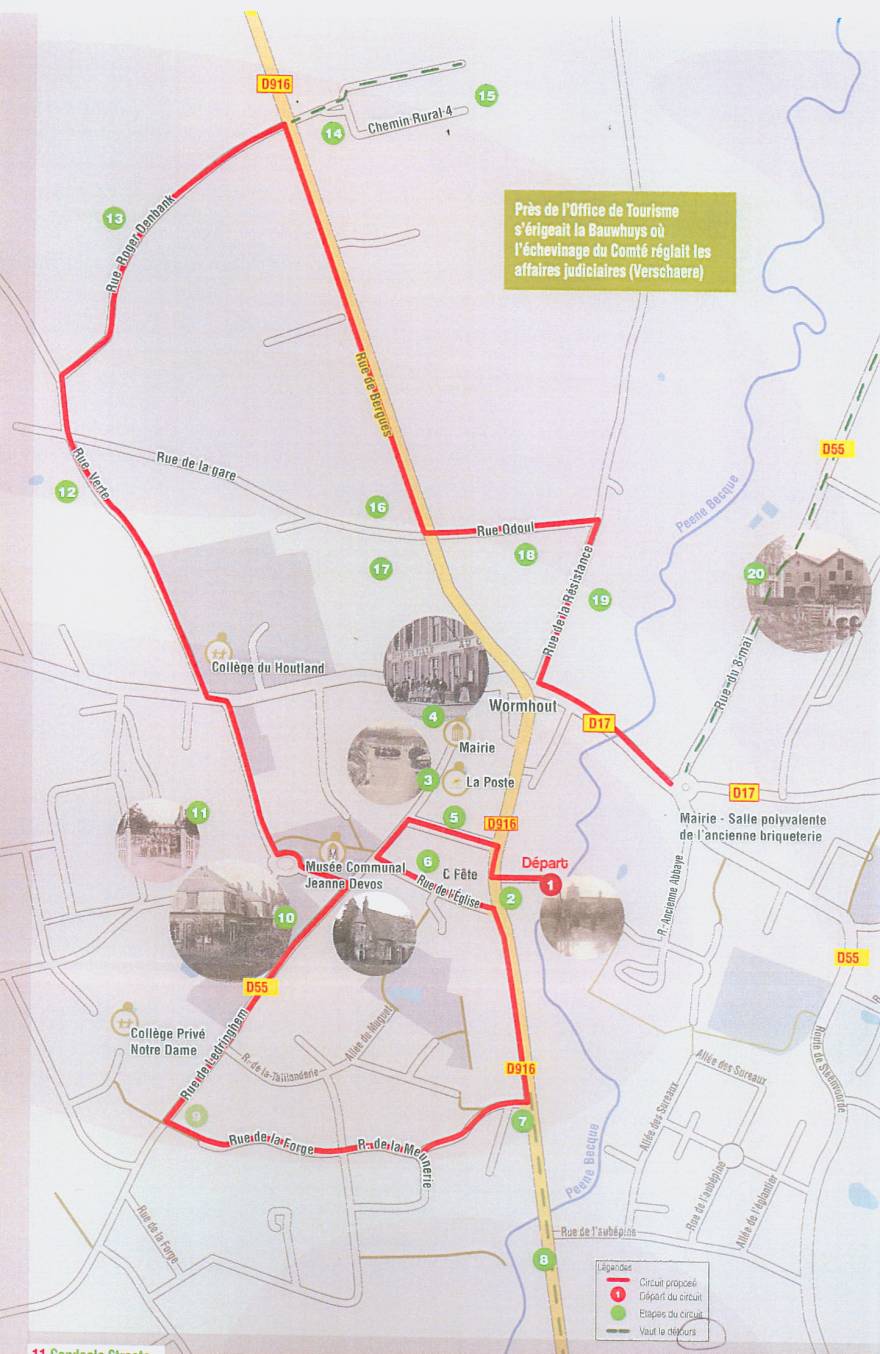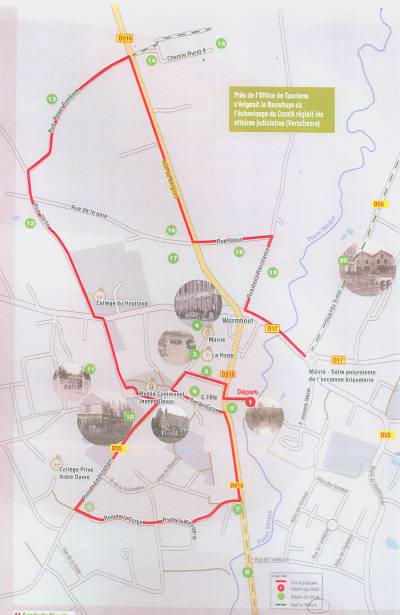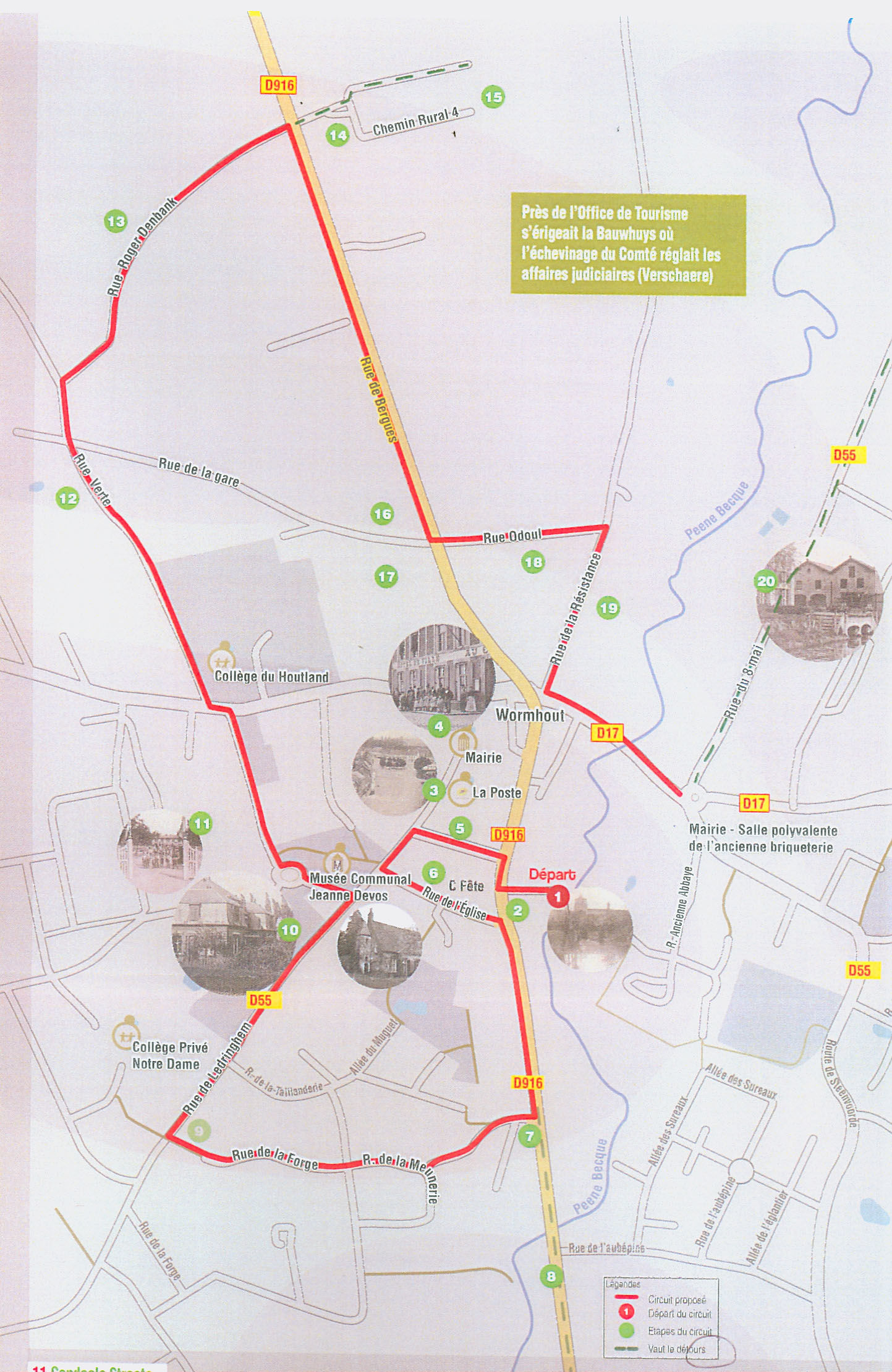If Wormhout can talk

" Si Wormhout m'était contée " If Wormhout were told to meIf you wish to self-discover the city of Wormhout, please find here-after the layout of the circuit "Si Wormhout m'était contée" 1 Starting point Bridge on the Peene Becque : 685, the year where 4 monks, one of whom was the future Saint Winoc, came from Sithiu to clear the land and evangelize the country. They built an abbey there probably on the site of the house (Prostie Saint Winoc) 2 The church This "Hallekerque" is built in yellow bricks. Observe the shelter on the street front: the country guard made his announcements after Mass. Enter the church (stained glass windows, stalls, altarpieces, altar rails and confessionals ...) 3 - 4 The square At 21 and 22, in the Middle Ages was the Agela Swaerte Leuw. It was there that the aldermen (Wet Huys) met to deal with civil and administrative matters. The town hall was formerly a hostel "De Swaene". Behind the war memorial (4) the Friends of the Flemish Bowling practice their favourite sport. The bandstand was bought from the city of Cassel in 1929 and rebuilt identically by the Wormhout’s craftsmen. 5 Rue Louis Blanckaert Former Mayer of Wormhout, he died suddenly on October 21, 1945, the day of his election to the deputation. The René Kerckhove Music School was also a College and Primary School. 6 Rue de l'église At number 17, at the end of the no-through road, you will discover in a green setting, a beautiful Flemish house from the 18th century (former presbytery) that the Municipality acquired in 1978 through life annuity sale. This is the Jeanne Devos Museum. 7 - 8 - 9 Avenue du Général Leclerc and route de Cassel At number 68, the former Bèle brewery (7). Note at number 70, the beautiful pediment and the brick gables positioned in herringbone. And across, the Peene Hof with Flemish crow-step gables. The house, located at number 31 route de Cassel, was occupied by the Schelle family (8) of whom Jacques Joseph was bishop. The Fénelon school of Dunkerque fled there during the last war. Then cross the road to the Fort Rosé housing project at number 54. Continue to the Llandudno (9) alley, a town in North Wales twinned with Wormhout, because of the historical links that unite the two cities. (Massacre of the Plaine au Bois in May 1940). 10 Rue de Ledringhem At the site of the CPAM (Health care office), was once the hospice and next to it the girls' school (10). The park of the Mayors (Henri, Albert, Emile, Robert and André) who cumulated all together 95 years of fulfilling their duties and lawfully exercising their powers. 11 Candaele Straete Behind the Robert Deldicque’s indoor sport halls, the Public Foster Home Centre and the Nature Centre (11). The story of this place is surprising: It was observation clinic, holiday camp, prisoners’ camp and school. 12 Rue verte At the archery meadow, the archers of the "William Tell" try to win the "Papegay" Bird (12) 13 Rue Denbank This Wormhout Resistance fighter was killed with 9 members of the FFI, including 3 others from Wormhout, on 5 September 1944 in Zegerscappel. 14 - 15 Cemetery Basically, the monument of the Debreyne family (father and son) recalls the Napoleonic wars, the graves (14), the memory of the British fallen during Operation Dynamo. 16 - 17 Rue de la Gare The castle dates from the mid-nineteenth century, it was the summer residence of a Dunkirk ship-owner. At number 8, the old Wormhout station (17) where we caught the little train of Flanders from 1948 to 1952. 18 Rue Odoul Colonel who fought in the War of 1870 and had a castle built in Wormhout for his retirement. 19 Rue de la Résistance 13 Resistance fighters, of whom 6 were killed, took part in combat during the Siege of Dunkirk. 20 Back-and-forth Rue du 8 mai, at 650 metres from the round-about, only the stables of the Château Maes remain, where the surrender of the Dunkirk pocket was signed on May 9, 1945. 24 hours after the official cessation of hostilities 21 return to Wormhout Tourisme |
|


